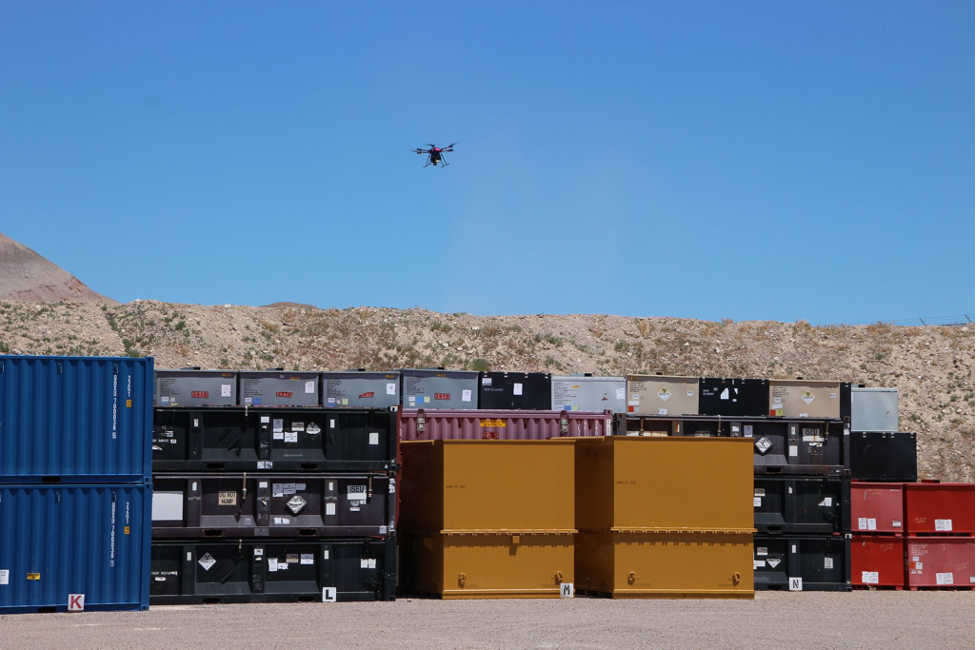Nuclear Science Division staff in the Applied Nuclear Physics Program recently visited the Nevada National Security Site (NNSS) to perform data collections in support of two ANP projects, both of which are funded by the Defense Nuclear Nonproliferation Research and Development (DNN R&D) Nuclear Safeguards portfolio. Both projects are focused on using computer vision technology to automatically identify nuclear material containers. The Container Counting (CC) project has developed software that analyzes camera images to automatically locate specific instances of nuclear material containers within a 3-dimensional model. The Inventory Verification through Detectors on Robotic Inspection Platforms (IV-DRIP) project has begun leveraging the products from CC and coupling them with radiological measurements and robotic autonomy.
The primary goal of the NNSS visit was to acquire data to validate the counting and container-type classification techniques for the Container Counting project, and to collect data for inventory verification with nuclear radiation mapping, both in handheld mode and on robotic platforms (mainly Unmanned Aerial Systems (UAS) and Boston Dynamics’s quadruped robot SPOT dog). The data collection was done at container storage facilities and the low level nuclear waste facility.
The team utilized machine learning to do object recognition and enable robotic systems (UAS and SPOT) to autonomously navigate to and investigate the content of radiation sources in the nuclear material containers. The two platforms were mounted with Localization AND Mapping Platform (LAMP) systems, allowing for precise and safe detection of radioactive materials within a given area. The team’s visit to NNSS not only enhanced our measurement capabilities but also demonstrated the effectiveness of automation. We look forward to further advancements and continued collaboration with NNSS in the future. Some of the sample pictures from the data measurement campaign are shown below.

